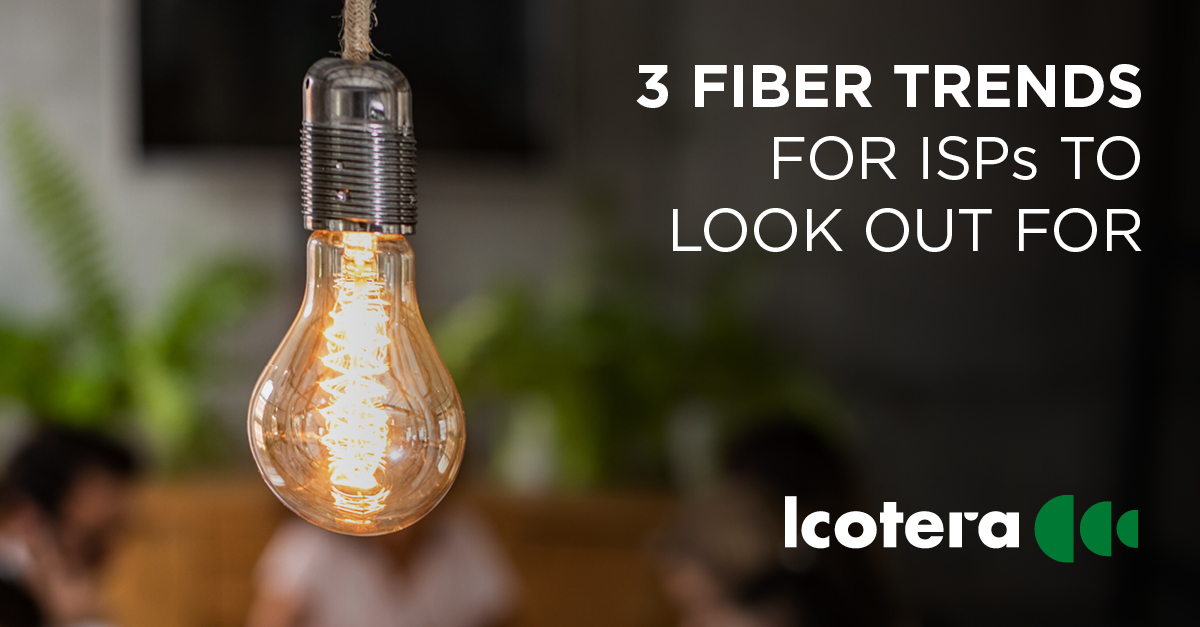Europe is on a steady path to full fiber, and rollouts are taking place at incredible speeds across the continent. Here, we look at three trends that are gaining a foothold across the European FTTH space and how ISPs still play a crucial role in fiber deployment and transitioning customers to fiber.
1: Fiber deployment is increasing across Europe
As of September 2020, over 183 million European homes now have access to fiber (homes passed), an increase of 12 percent from 2019. This means that fiber coverage now covers more than half of the total homes in Europe. The deployment of fiber is increasing across Europe, and this is particularly visible when looking at the take-up rate in all 27 European nations + the UK. The take-up rate is the percentage of homes passed compared to the number of homes passed by fiber. Compared to 2019, the take-up rate has increased by 3.6 percent and is currently at 46.9 percent.
To increase access to fiber, two things need to happen.
First of all, fiber needs to be put into the ground. To make this happen, the fiber builders need simple rules from the government to ensure that expansion can happen without too much “red tape”.
Secondly the individual house owners need to understand the benefit of connecting to the fiber which will increase the take-up rate. Understanding how this has been done in countries with high take-up rates is key to success in these areas. In Germany, there are still close to 35 million homes and buildings that still need to be connected. This figure is close to 24 million in the UK, and in Italy it is close to 16 million. These three countries alone represent 60 percent of the total remaining homes to connect across Europe. The good news is that these three countries have made progress over the past years, and they have clear objectives for accelerating fiber deployment.
Bonus fact: Alternative ISPs still constitute the most significant part of FTTH players, contributing to around 57 percent of the total fiber expansion.
2: Driving more customers towards fiber
There is a natural lag between accessing homes to fiber (homes passed) and households signing up for a fiber connection (subscribers) through a network operator or an internet service provider. Overall, the number of subscribers has increased to 82 million, up 17 percent from 2019. In some countries this lag is greater than in others, highlighting that customers still need to be convinced to transition to fiber.
Driving more customers towards choosing a fiber connection also means that the whole value chain – from deployment to access point – must deliver on the promised throughput and quality of service, making full use of the fiber capacity. For ISPs, it will continue to be important to realize the potential of the fiber network and deliver on the perceived benefits from switching from a traditional copper connection to a fiber connection. Otherwise, The end customer will not experience why a fiber connection is the better option.
Network operators, ISPs, and governments play a vital role in promoting fiber and having a clear plan to help transition the last services that run on copper to fiber.
3: Fiber is a more sustainable solution
Sustainability will be a contributing argument in moving people from a traditional copper connection to a fiber connection. Previously, fiber connection advantages were mainly based on performance, speed, scalability, and unlimited bandwidth. Still, there are also green and sustainable perspectives that make fiber even more relevant for ISPs:
- Fiber is the best option in terms of the limited power it requires to operate.
- Compared to a copper network, there are few maintenance costs associated with a fiber network. This means the need to dispatch a truck to repair any cables is reduced.
- Fiber is an enabler of multiple applications that will help societies transition to a more digital and sustainable world. E.g., remote working and remote learning are a direct consequence of broadband networks, and those are the indirect benefits of fiber.
- Ultimately, a fiber connection leaves a smaller carbon footprint than older competing technologies. As an ISP, this is particularly important, as this adds another benefit favoring a fiber connection over a traditional copper connection.
All figures have been taken from the 2021 Market Panorama Report, which outlines fiber deployment trends in Europe prepared by IDATE for the FTTH Council Europe.
![]()
WANT TO KNOW MORE about how your ISP business can stay ahead of the competition and achieve long-term competitive resilience, enabling you to run your business in ever-changing market conditions? Download our E-book: The competitive ISP - Enjoy the read!
Download E-book: The competitive ISP here

